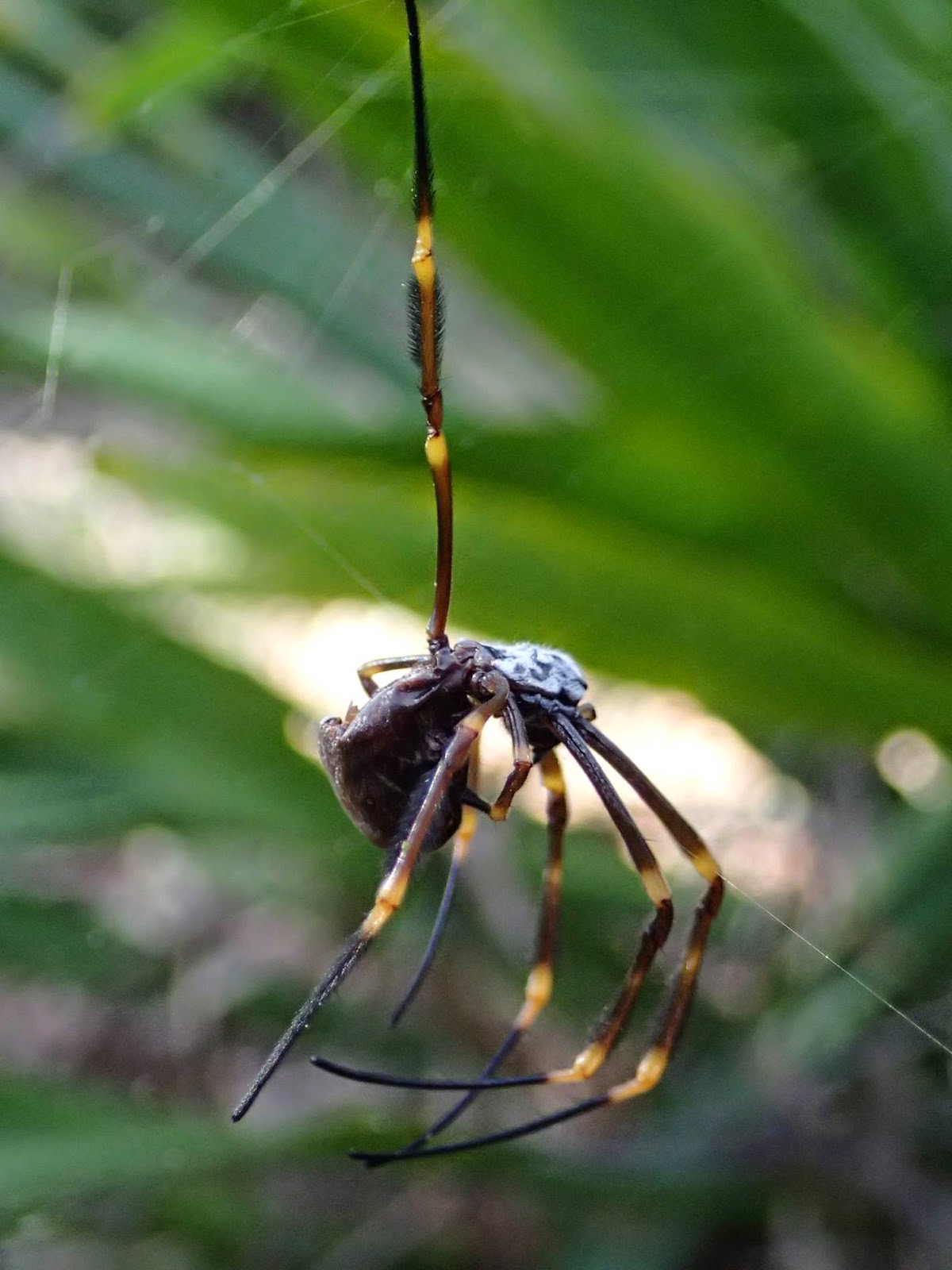It’s
getting pretty cold Sydney in the moment, which means that most orb weaving spiders
are coming towards the end of their season and I finally have some time to reconcile
the work I’ve been doing for the last few months.
Some of the
Golden Orb Weaving spiders I released for my transplant experiment are still
around so I thought I would share some of my (mostly unexplained) observations
and questions about these spiders.
Observation 1) How do they die?
We’re
really not sure what eats golden orb weavers. They are very conspicuous with their
fat bodies and their big webs out in the open, so why don’t they get eaten more
often? Maybe they are just not tasty or it could be that their strong 3D web structure
is enough to deter most birds (for reasons obvious in the photo below from the telegraph news paper).
Birds must
eat some of them because I’ve noticed many of my spiders missing with a large
hole in the middle of the web. Also, while I was out releasing my spiders I got
to experience a rare predation event first hand as a Kookaburra swooped down in
front of me and gobbled one up. So I guess they are tasty!
I also
found one very dead looking spider in her web next to a dead bee. The spider must have been a bit too slow in wrapping up her prey and got stung by the bee.
Interestingly the next week I went back and the spider was sluggish but alive. She
lasted a few more weeks.
Parasitism is probably also a large player. I found this spider dead in the web with a hole in her abdomen:
Observation
2) Reproduction
I placed
some of my spiders out in the middle of national parks to see if they survived
longer than the ones in the city. I didn’t see any other golden orb weavers in these locations and yet 3 weeks into the trial a male turns up on one
of the females webs. There is no way he could have come in with the female so I
guess he was just out there waiting and got very lucky…? There must be lots of disappointed males out there.
I’ve also
seen many females make egg sacks this year, which is a relief because many didn’t
survive long enough to breed last year (it was a very hot summer). On many occasions the spider will die
after she has created her egg sac, and those that don’t die often move webs. I’m
not sure why they would do this, they only move ~5m and I would have thought it
easier to go back to their original web.
Observation
3) Web building and... swapping?
Some of the
spiders I released started making their webs straight away, by dropping down on
a long thread and drifting to another branch. Almost all of the spiders I found
had made their webs after the first week. But one spider, still tagged, showed
up over 2 months after I had released her, in a web right next to her release
spot. So she must have been sitting around for weeks, with no way to catch food... I wonder what she was waiting for.
I’ve also
noticed a few occasions when spiders will swap webs. I’ve never witnessed
conflict between two spiders because they usually stay in their own web but
maybe the bigger one decides she wants the web of the smaller one sometimes.
This also makes it quite hard to keep track of who is who, lucky most of my bee
tags stayed on!




No comments:
Post a Comment